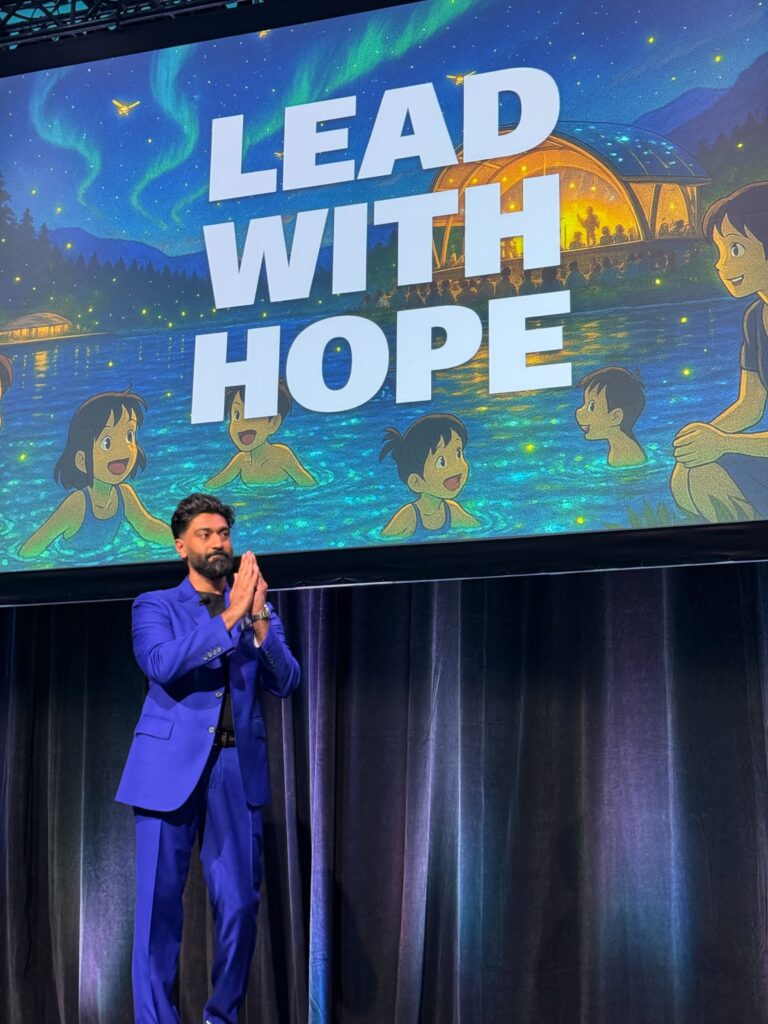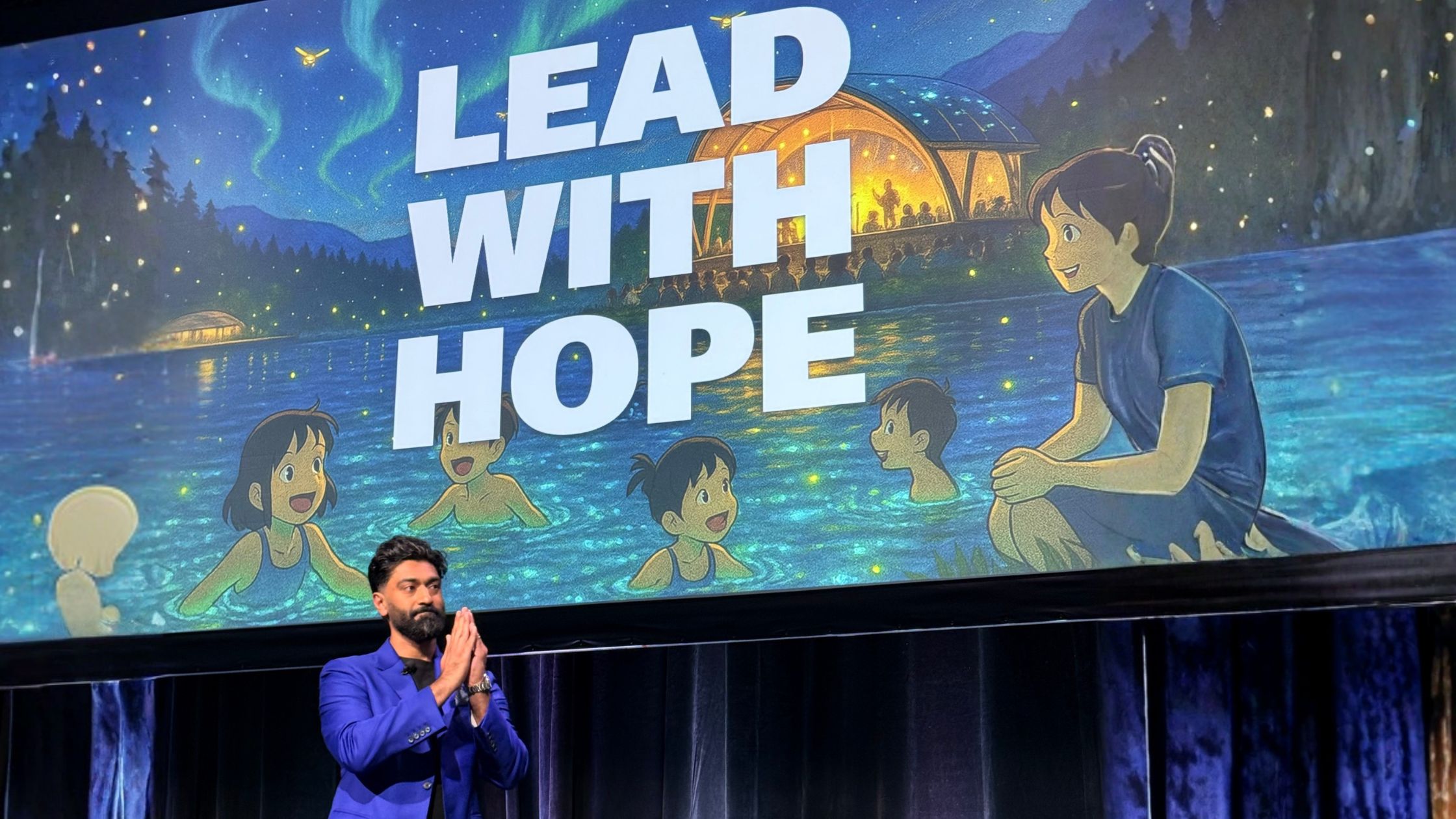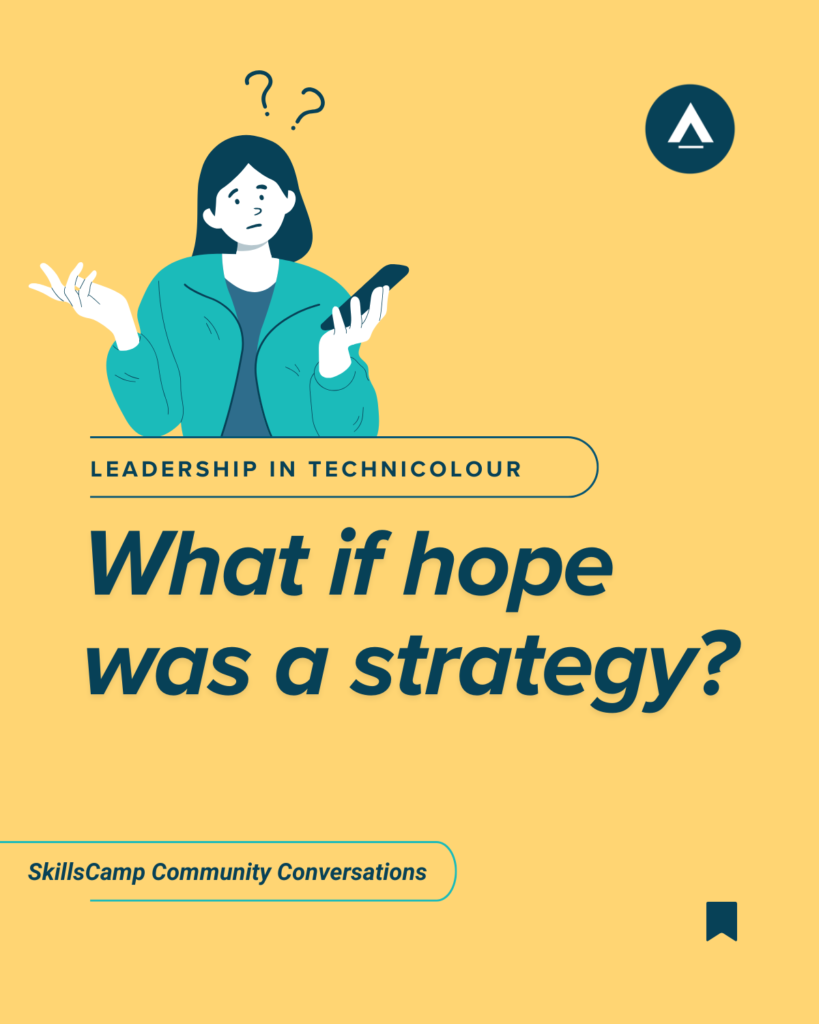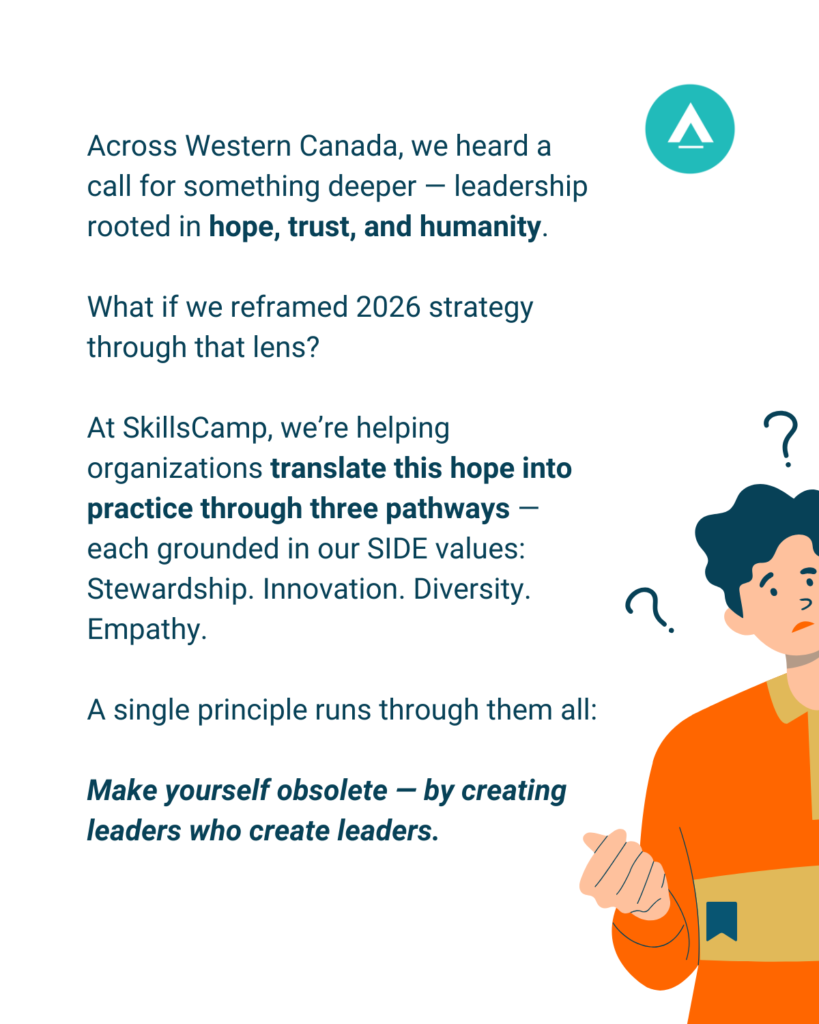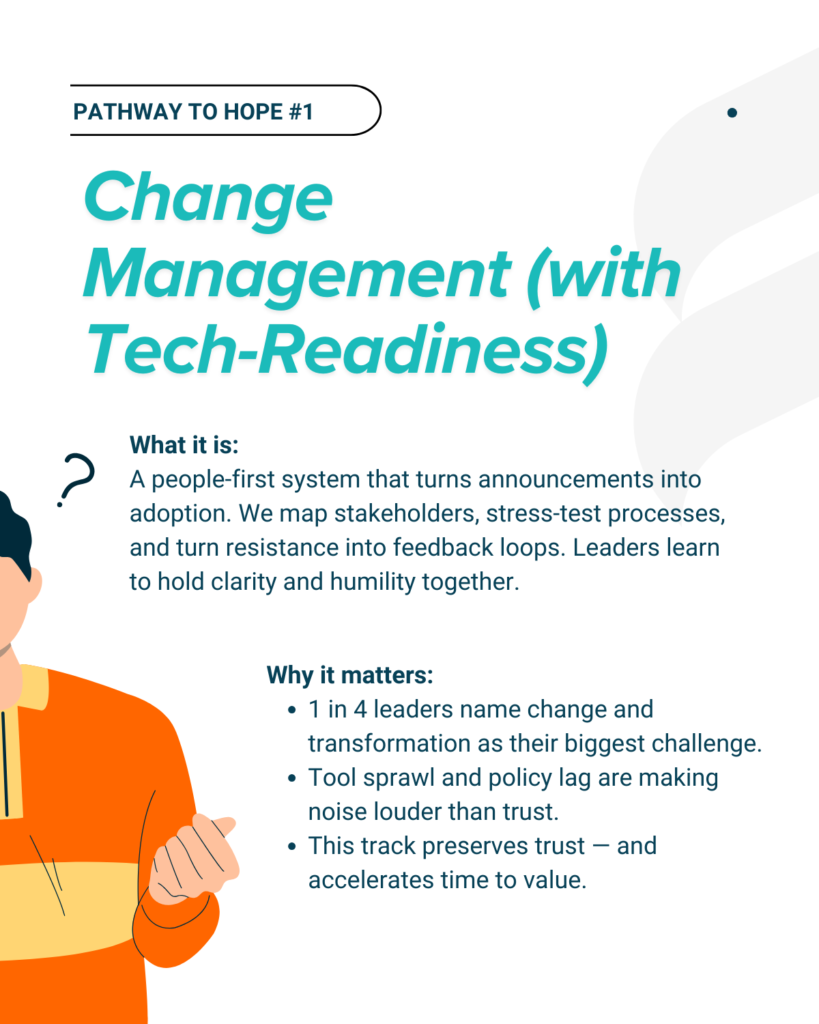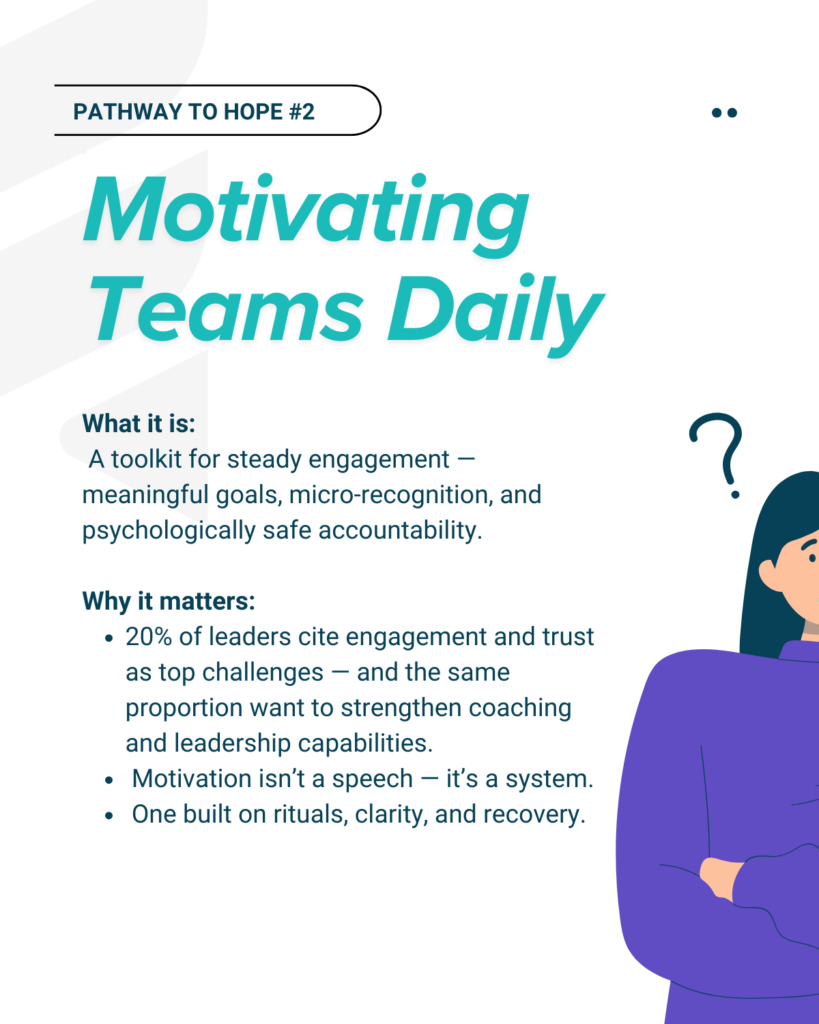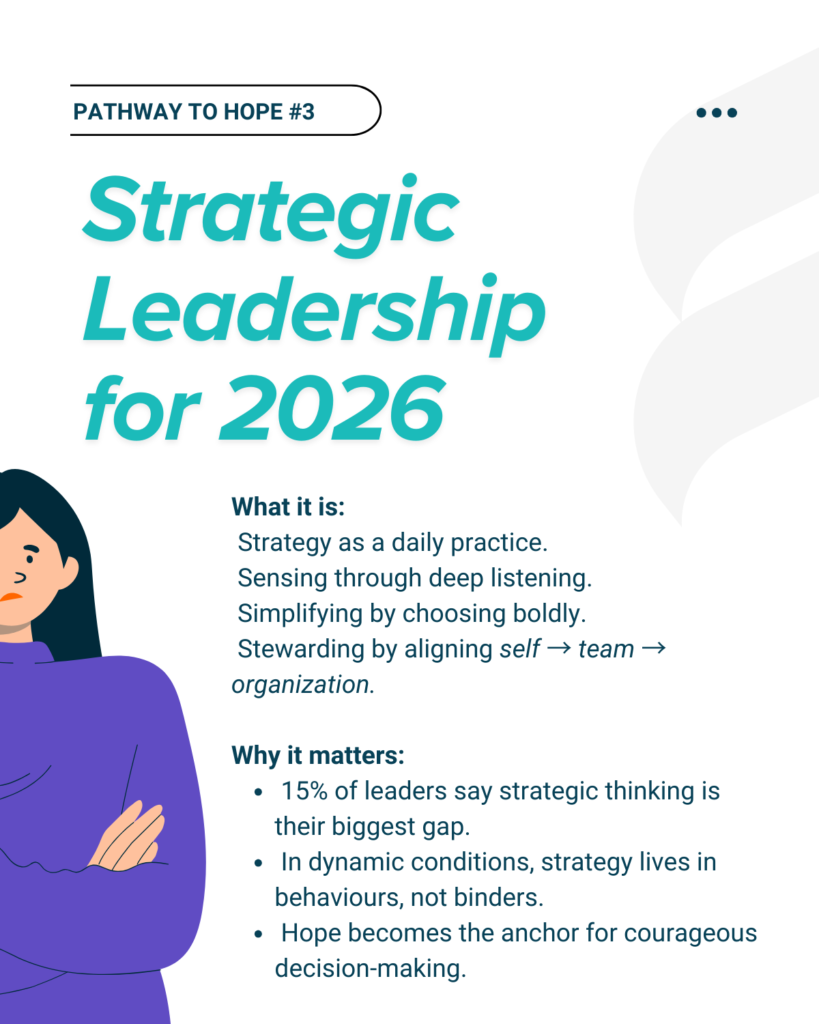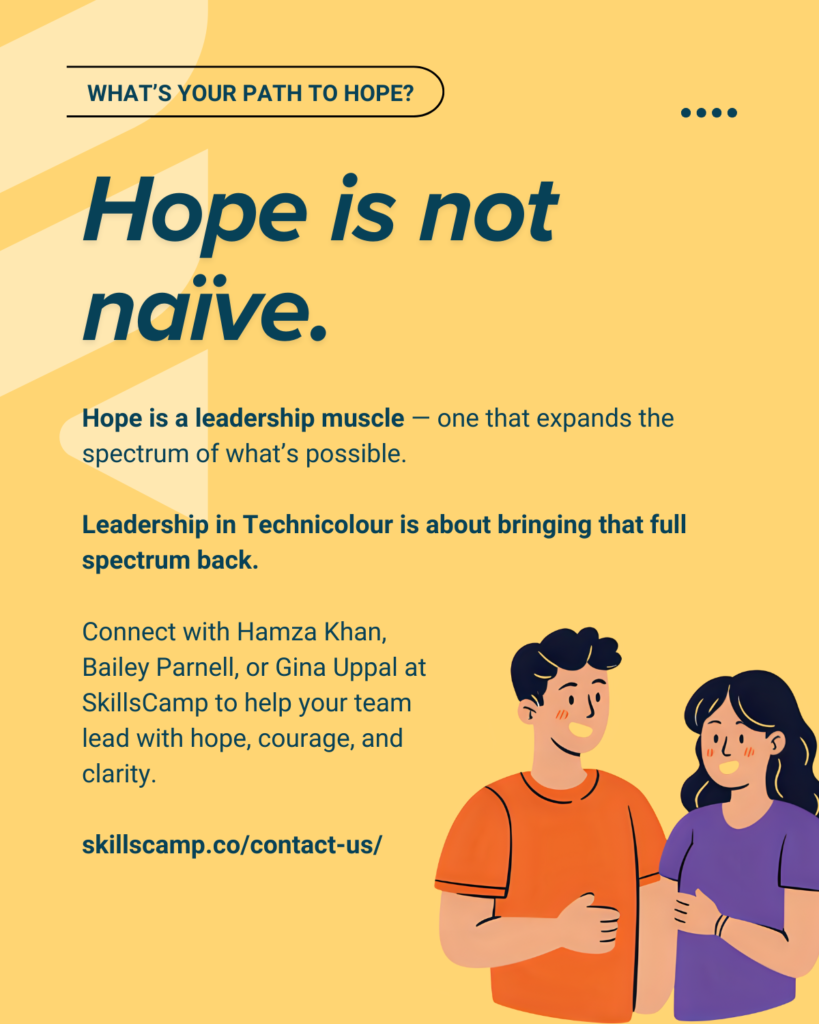The Question Beneath It All
In Calgary and Edmonton, we painted a future in vibrant technicolour: pristine rivers, energetic cities, eclectic communities, workplaces brimming with care. As the enthralling images blossomed on the screen, leaders leaned forward.
Most of them arrived carrying both energy and fatigue. When asked to describe their state in one word, just over half (55%) chose something positive—hopeful, excited, resilient. Yet more than a third admitted to being tired, anxious, or burned out. That duality—bright optimism threaded with exhaustion—was the air in the room.
I asked: Tomorrow morning, what do you hope goes right?
The answers revealed a zeitgeist of uncertainty. Nearly half of leaders (50%) described today’s spirit of the age as volatile, confusing, or chaotic. Only three in ten said they saw it as hopeful or transformative. The paradox was clear: the future felt shaky, but most leaders still leaned toward hope.
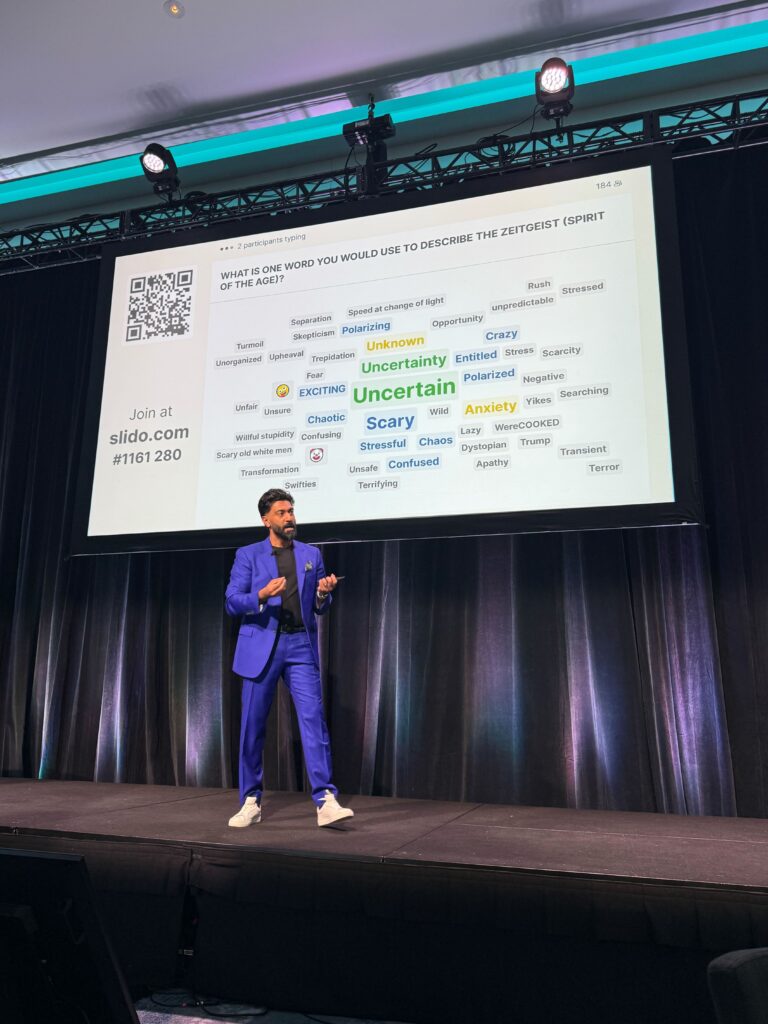
That’s why the question beneath all the others was so urgent: How do we keep our teams healthy and high-performing while the ground keeps moving?
The premise we explored together was this: lead with a bright core—love, care, and hope—and convert it into action. Treat AI as augmented intelligence that lightens load and lifts judgment. Practice benevolent rigor—the kind that sets clear expectations while protecting recovery. Build more leaders so the system grows steadier with every handoff.
And the data confirms this instinct. When asked what wisdom they carry forward, the largest share of leaders—30%—named care and humility as the best advice they’d ever received.
The future may be uncertain, but the way through may be more familiar than we think.
A Human Center
One moment stays with me. In a hotel lobby between sessions, coffee steamed in porcelain mugs while an organizer from CPHR Alberta checked timing against a folded program. An HR Manager stepped close and shared a story about a teammate who had just lost a parent. Her voice tightened, then cleared. We walked toward the ballroom together.
Later, on stage, I named my own season of grief and the work of leading through it. You could feel the air change. Not from spectacle—from recognition.
That recognition is what most leaders crave.
In fact, 20% said their most urgent challenge is keeping teams engaged and motivated, and another 15% said the same of wellbeing and burnout. The common denominator is humanity: people want to be seen, supported, and led with care.
What Leaders Are Navigating
The transition to the AI era brings both promise and fatigue. Tools change quickly, policies lag, and the learning curve feels constant. Leaders told me this directly—and the data echoes it. Three in ten believe AI and technology will be the biggest force shaping leadership in the next five years. Yet nearly as many point instead to values, culture, and inclusion as the deeper drivers of what leadership must become.
Disengagement is creeping in, harder to measure until it becomes expensive. Ops leaders are asking for one humane system that holds both clarity and care. They are not asking for another dashboard—they are asking for leadership that steadies people in motion.
What’s Working Right Now
What is working, reassuringly, looks simple.
- Care shows up as normalized one-on-ones, protected rest, and benevolent rigor.
- AI becomes a co-pilot, freeing judgment for the human parts of the job.
- Resilience grows when teams rehearse change through pre-mortems, simulations, and small pilots that rebuild confidence.
These practices line up with what leaders say they wish they had more of. Asked which capability they’d strengthen tomorrow, one in four named change readiness, one in five chose coaching and people leadership, and another 15% pointed to sharper strategic thinking.
Three Practical Paths with SkillsCamp
Why It Matters
Burnout was already global before the last few years sped everything up. The stakes are human, organizational, and systemic. Leaders know this: the worst advice a third of them ever received was “don’t show weakness.” They are rejecting outdated myths in favor of care, trust, and humility—the very values that showed up most in the best advice they’ve carried forward.
The futures we drew in those rooms are not fantasies. They are early renderings of 2045 stewardship: cities and companies that place people as ends, not means. That’s the work of leaders who choose care over control and create conditions where people—and performance—can thrive.
So tomorrow morning, ask yourself: What do I hope goes right?
If any part of this resonated—the technicolour futures, the human story, or the practical paths—let’s shape it for your team.
Book a conversation with SkillsCamp to explore these programs and build your path to burning bright or contact us to join our monthly community strategy calls where we bring together people leaders to unpack trends and tensions in the future of work.
